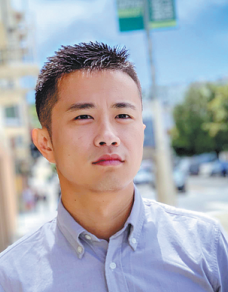

"I grew up in China, and I like reading ancient Chinese books, such as Tao Te Ching. While all my other classmates were reading stories written by Louis Cha (Jin Yong), I liked to read The Hundred Schools of Thought (Zhuzi Baijia). I like Chinese philosophy. Such experiences have rooted me in Eastern culture," says Hu.
His award-winning artwork, Nine Songs, was created based on Warring States Period (475-221 BC) poet Qu Yuan's poems. Hu presents the stories of Nine Songs with CG art that he thinks Westerners can understand.
"Nine Songs has been painted by many painters since ancient times. Many of those traditional Chinese paintings are relatively abstract, very vague. For example, Shao Siming, the god of birth, is the symbol of life. Westerners may not understand abstract symbols," Hu says.
"I want to express the story in a concrete way, telling it through pictures-how people in the stories look, how the animals and plants look, and even how the light looks. So, Westerners may understand the story better and arouse their interest to understand what kind of story Nine Songs is."
Hu grew up in Northwest China's Gansu province, where many cultures meet-ethnic Han and Hui, cultures of the ancient western regions and so on.
"Sometimes, just on the bank of the Yellow River, there is a mosque next to a Taoist temple. These strong cultural contrasts and fusion have taken root in me. I also traveled around the country (China) with my parents. In my mind, culture is not limited to one place," says Hu.
Nine Songs presents his imagination of ancient Chu culture. Another series of works by Hu, Wonders, presents different architectural styles in different places in China. His other works also adopt cultural elements from the Middle East, Japan and India.
"I want to express a point of view that the civilizations of different nations and periods are all very brilliant and splendid. I always try to make myself work with an open mind," says Hu.